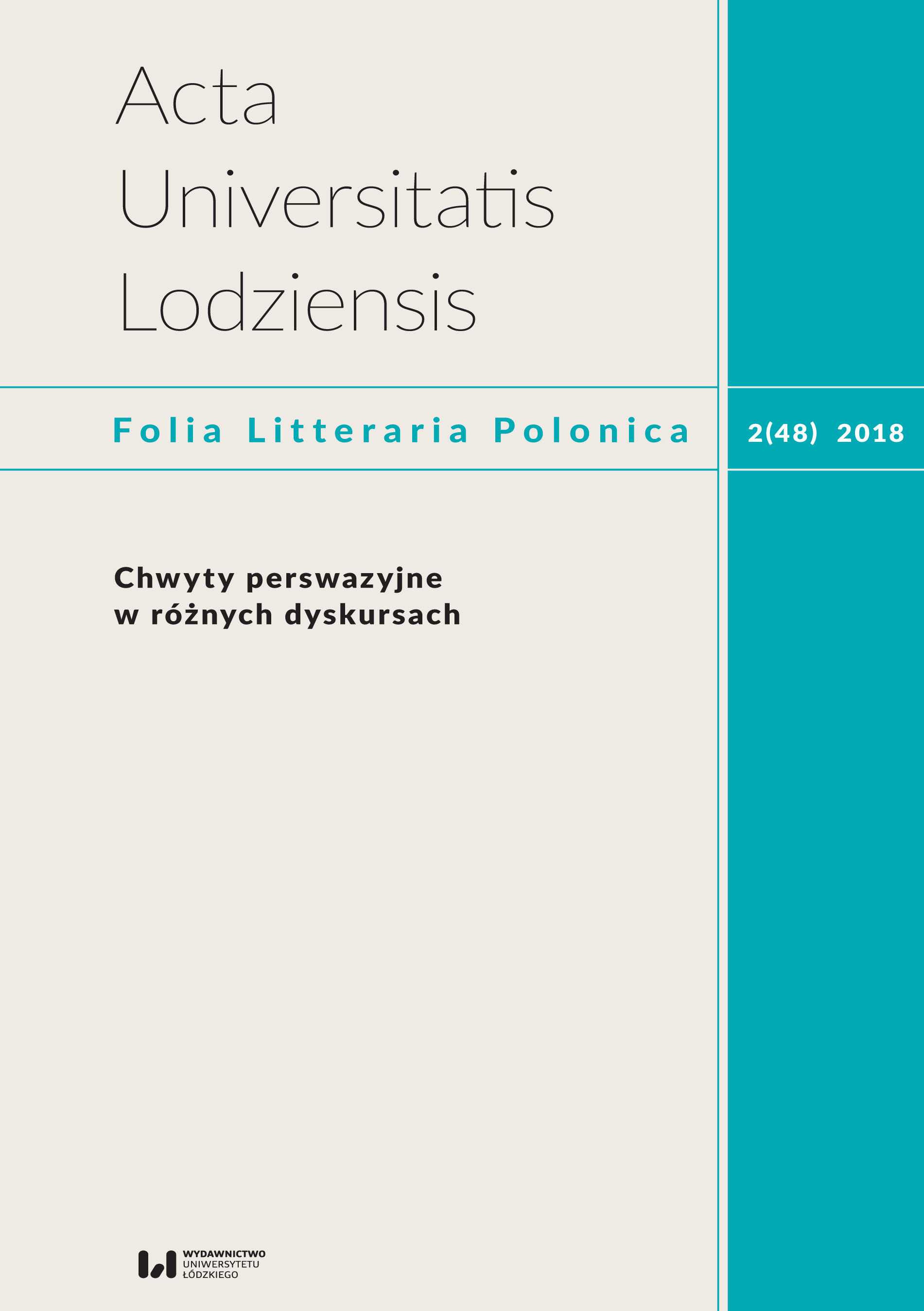How to Convine the Column’s Reader to the Author? The Analysis of the Empirical Datas
DOI:
https://doi.org/10.18778/1505-9057.48.07Keywords:
image, constructivism, discourse analysis, style, column newspaper, persuasion, authorityAbstract
The article attempts to answer the question of what is responsible in the column text for attributing to the authors only positive or neutral image features. The basis is the analysis of the empirical data collected with the participation of respondents, who after reading the column stated the characteristics of the author – in their view – shown in the presented text, and then indicated fragments expressing each of the attributed image features. They read the utterances of Krzysztof Varga, Piotr Zaremba, Magdalena Środa and Szymon Hołownia. It is interpreted that although the influence of such a relatively positive perception of the columnists could be influenced by the research procedure itself, which limited the critical approach to the author (defining its characteristics directly after reading the text), it seems that the most important means of convincing to themselves was the discursive design of the text (generalizations, strongly vocabulary, humour with irony, common parlance) and reading the entire text, which could give an effect of understanding and respect for the author even in the absence of his views.Downloads
References
Fleischer M., Konstrukcja rzeczywistości 2, Wrocław 2008.
Google Scholar
Fleischer M., Typologia komunikacji, Łódź 2012.
Google Scholar
Grochala B., Komizm językowy w felietonach Antoniego Słonimskiego, Łódź 2006.
Google Scholar
Habrajska G., Nakłanianie, perswazja, manipulacja językowa, „Acta Universitatis Lodzensis. Folia Litteraria Polonica” 2005, nr 7, s. 91–126.
Google Scholar
Kłosińska K., „Ekspert”, „mędrzec”, „dowódca”, „wieszcz” i „dziadek” – różne role nadawcy programów partii politycznych, tworzone dzięki stylizacji, „Język a Kultura” 2014, t. 24, s. 95–105.
Google Scholar
Korolko M., Sztuka retoryki. Przewodnik encyklopedyczny, Warszawa 1990.
Google Scholar
Korycińska-Skóra K., Wpływ potoczności na perswazję wypowiedzi Andrzeja Leppera, „Język a Kultura” 2014, t. 24, s. 69–78.
Google Scholar
Pratkanis A., Aronson E., Wiek propagandy. Używanie i nadużywanie propagandy na co dzień, przeł. J. Radzicki, M. Szuster, Warszawa 2005.
Google Scholar
Sokół A., Perswazja, manipulacja, zabawa językiem – wybrane aspekty językowe czasopisma „Wróżka”, „Acta Univeritatis Lodzenis. Folia Linguistica” 2010, nr 45, s.177–195.
Google Scholar
Szymanek K., Sztuka argumentacji. Słownik terminologiczny, Warszawa 2005, s. 257.
Google Scholar
Downloads
Published
How to Cite
Issue
Section
License

This work is licensed under a Creative Commons Attribution-NonCommercial-NoDerivatives 4.0 International License.











